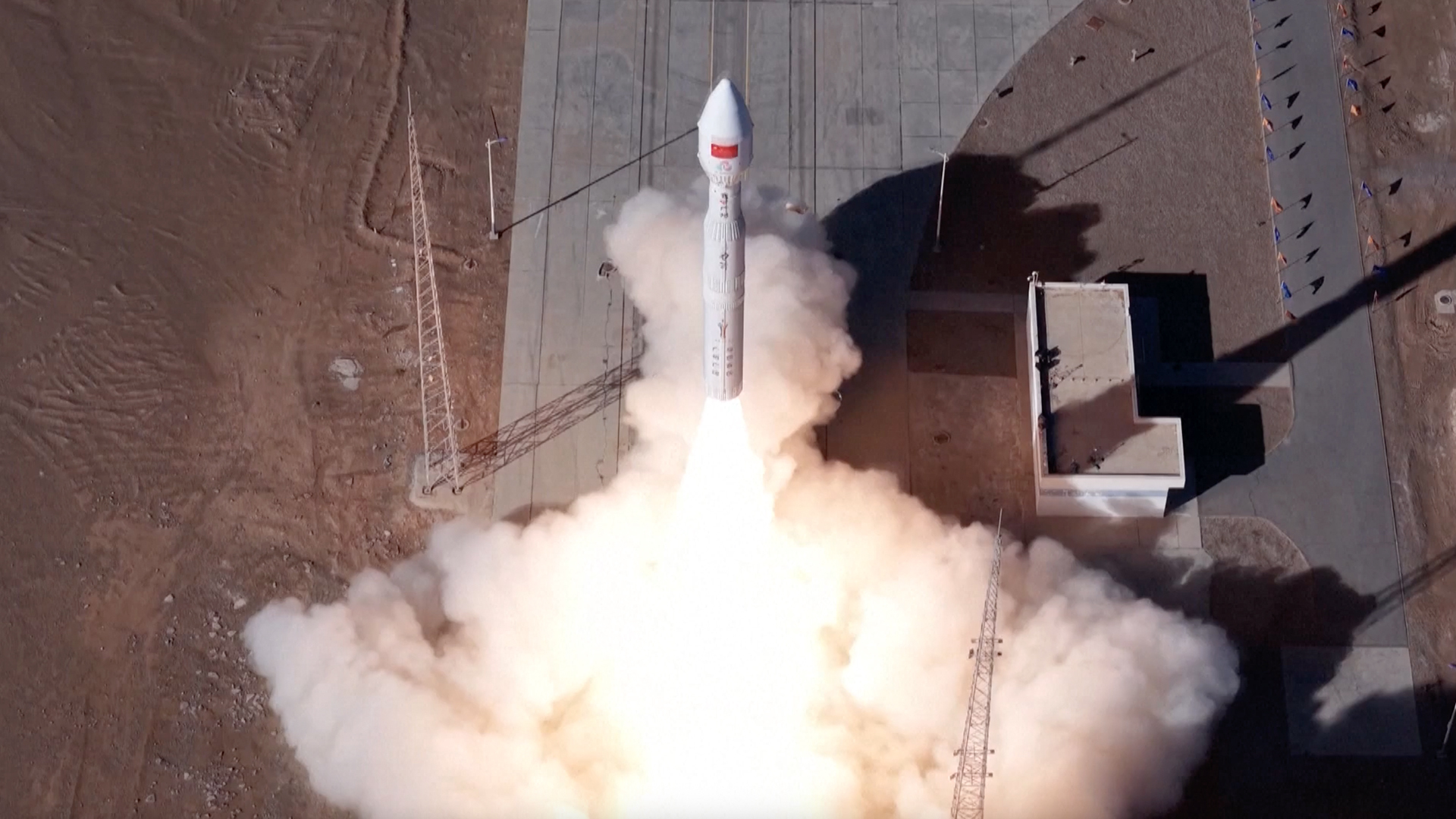The Enduring Mysteries of Asteroids
There are hundreds of thousands of asteroids circling our sun, all so-called "minor planets" left over from the formation of the solar system. Much about them remains mysterious.
Solving these mysteries could shed light on the past, present and future of cosmic impacts on Earth. Among the puzzles:
Missing asteroids
There should be far more asteroids that resemble Vesta, the second largest body in the asteroid belt.
The outermost layers of Vesta are composed mostly of basaltic rock—the same kind that makes up much of Earth's crust—and theories of asteroid formation suggest more than half of all asteroids should be made largely of either basalt or another common mineral on Earth, olivine. However, roughly 99 percent of these predicted asteroids are missing.
Many of Vesta's siblings might have disappeared when Saturn and Jupiter shifted their orbits roughly 4 billion years ago, with their gravitational pulls "pulverizing these asteroids against each other, or slinging them at Earth, the Moon and the rest of the inner solar system," explained planetary scientist Christopher Russell, principal investigator for NASA's Dawn spacecraft.
This scattering likely caused the series of devastating cosmic impacts dubbed the Late Heavy Bombardment.
Breaking space news, the latest updates on rocket launches, skywatching events and more!
"Current research suggests that the present asteroid belt contains only about 10 percent or less of the material that originally formed between Mars and Jupiter, and that the bulk of the original material spilled out across the inner solar system about 3.9 billion years ago to form the Late Heavy Bombardment that cratered the ancient landscapes of the Moon, Mercury and Mars," said planetary scientist Jay Melosh at the University of Arizona at Tucson.
Russell added that compared with its lost siblings, "Vesta may have just led a charmed life—very nearly the sole survivor."
Where do meteorites come from?
A number of meteorites on Earth are rocks blasted off the moon and Mars. Still, most meteorites are thought to come from the asteroid belt.
For years, scientists had a hard time figuring out which asteroids the meteorites came from. While researchers can directly study what meteorites are made of, for a long time they could only infer asteroid composition using telescopes, and as far as these observations could tell, the chemistry of asteroids and meteorites often did not match.
Recently spacecraft aimed directly at the asteroids, such as NASA's Galileo and NEAR Shoemaker probes, helped shed light on this mystery. These findings suggest that stony meteorites come from similarly rocky asteroids, and they probably appear different chemically simply because of weathering the asteroids undergo in space from radiation and impacts with other rocks.
Still, planetary scientist Dan Durda at the Southwest Research Institute in Boulder, Colo., said a lot of work remains to be done regarding which specific types of asteroids yield particular classes of meteorites.
Why is Vesta so bright?
Vesta is the brightest asteroid, its surface being roughly three times as bright as Earth's moon. Its unusual brightness suggests it might possess a strong magnetic field, which could help shield it from particles driven by the solar wind that would ordinarily dirty the asteroid, Russell said.
The Dawn spacecraft is currently venturing to the largest bodies in the asteroid belt—Vesta and Ceres—but it lacks a magnetometer to probe magnetic fields, meaning a future mission is needed to solve the mystery's of Vesta's brightness.
Is Earth safe?
Much of the study of space rocks is aimed, ultimately, at the same question: Are there any asteroids aimed at us? Right now, there are no asteroids known to be on a collision course with our planet. It's the unknown rocks that scientists worry about.
"Statistically, if you go to Vegas to gamble, you know you're going to lose eventually, and in the same way, we know with at least small asteroids, one will hit the Earth eventually," Russell said.
Still, Russell noted protecting Earth from asteroids might prove trivial. "It might be as simple as painting one side white and another side black," he said. This would make one side of the asteroid reflect more sunlight than the other, altering its course. "No need for any nuclear explosion."
- Video: Asteroid Hunting
- Strange Asteroids Baffle Scientists
- The Strangest Things in Space

Charles Q. Choi is a contributing writer for Space.com and Live Science. He covers all things human origins and astronomy as well as physics, animals and general science topics. Charles has a Master of Arts degree from the University of Missouri-Columbia, School of Journalism and a Bachelor of Arts degree from the University of South Florida. Charles has visited every continent on Earth, drinking rancid yak butter tea in Lhasa, snorkeling with sea lions in the Galapagos and even climbing an iceberg in Antarctica. Visit him at http://www.sciwriter.us
